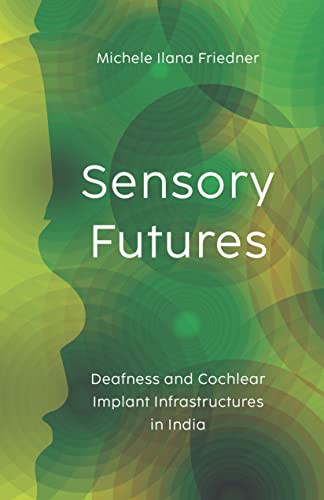Sensory Futures: Deafness and Cochlear Implant Infrastructures in India
amazon.com
Sensory Futures: Deafness and Cochlear Implant Infrastructures in India

A commitment to deaf futurism allows us to include multiple sensory, social, and communicative orientations as normal and to see deaf as normal as well.
multisensory, multimodal, and engaged in multipersonal interactions.
what if instead of a focus on deafness as a neurological emergency, there is recognition of the existence of an (infra)structural emergency around access to education, employment, and everyday life that exceeds the boundaries of an individual deaf child and her neurology?
for normal as an ever-expanding quality and experience, distinct from normative understandings of the senses, communication, and social relations.
Crip technoscience, as a concept and practice, raises questions about who can hack, tinker, and design and the role of these practices in actually dismantling infrastructures of power—although it perhaps still foregrounds material infrastructure and objects.
“crip technoscience studies” critiques how disability-related technologies have been designed for and not by disabled people.
“crip technoscience” encompasses “practices of critique, alteration, and reinvention of our material-discursive world.” It “braids together two provocative concepts: ‘crip,’ the non-compliant, anti-assimilationist position that disability is a desirable part of the world, and ‘technoscience,’ the co-production of science, technology, and political
... See more“We want mothers to notice everything, they need to see everything.”
communication—and relationality—can come in different forms, in contrast to what professionals often tell mothers about the primacy of listening and spoken language.